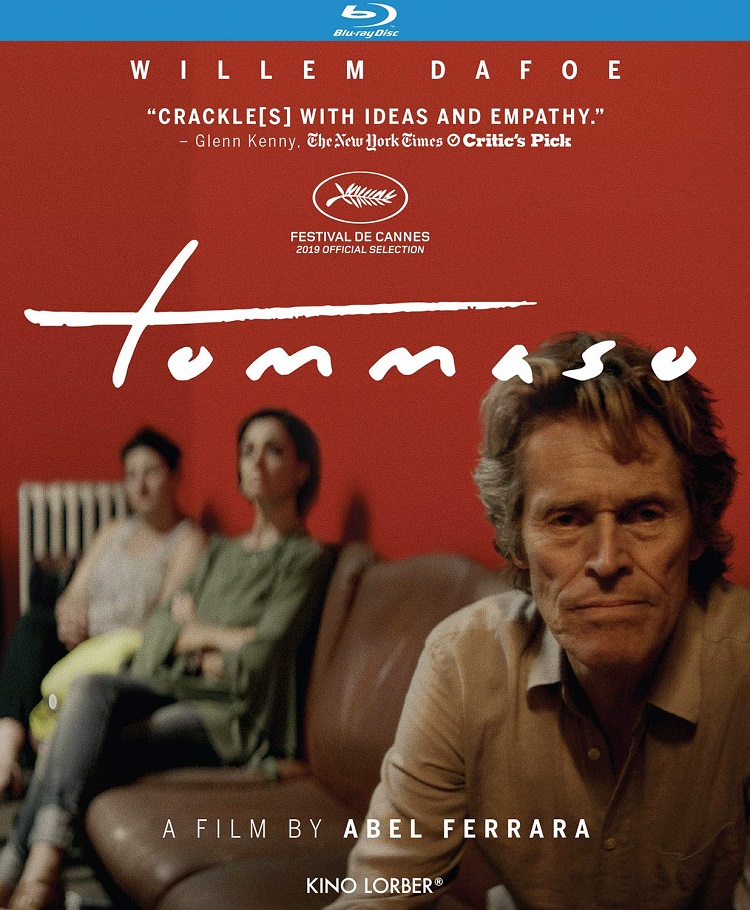
Written By Ram Venkat Srikar
In 2007’s Mr. Bean’s Holiday, Willem Dafoe played Carson Clay, a filmmaker whose film ‘Playback Time’ premieres at Cannes. Tommaso, which also premiered at Cannes last year, reminded of the aforementioned film-within-film, only less absorbing and exponentially more pretentious. The film brings back Dafoe into an Abel Ferrara contemplation for the fifth time, with their last collaboration being Pasaloni (2014), a film that chronicles the life of Italian filmmaker, Pier Paolo Pasolini, whose film Salò or the 120 Days of Sodom remains in the books of history as one of the most infamous films to be ever made. Over the years, Ferrara has carved a niche for himself with cautiously minimalistic and unexaggerated stories, which at instances gives the impression of being pretentious, and that’s the taste Tammaso leaves you with. It’s flavorless, but that’s how it is constructed to be.
Tommaso is Ferrara’s self-portrait, a confession, or a letter of apology. Not a stranger to low-budget films, Tommaso is shot in the filmmaker’s own apartment in Rome, with Dafoe playing Tommaso (ahem Ferrara). Moreover, Cristina Chiriac, Ferrara’s spouse, plays Tommaso’s wife, who is 30 years younger than him, and Ferrara’s daughter, Anna Ferrara, plays Tommaso’s. Get it? The deliberate intention of keeping it minimal and grounded prevails throughout the film, and after a certain point, we let go of expecting something dramatic might happen. The film is completely devoid of dramatic conflicts and solely tries to capture the emptiness of Ferrara’s life in Italy, which it passes with flying colors. However, the film’s monosyllabic nature, copulated with its lackadaisical narrative pace, does not bust a gut or at least try to emotionally arrest us, and that’s where it de-rails.
Tommaso‘s biggest adversary is the very same emptiness that it’s trying to capture, which it swiftly metamorphoses into insipid, reiterative sequences which continually underscore the same point, only to gradually descend in impact along with the runtime. I understand Ferrara is knocking himself out to create a pattern in the protagonist’s amorphous life, by pursuing him day-after-day, but the resultant is tiresome and temper-testing because it’s aimlessly elongated. Again, the creative choices and their intentions are evidential, but they fail to succor a two-hour film that insists on standing still on thin ice. The lack of dramatic conflict is not an issue, for instance, Jim Jarmusch’s Pateson (2016) or Alain Resnais’ Last Year at Marienbad (1961) are testaments for driving the narrative without dramatic friction, and yet be distinctly engrossing. However, the repetitiveness of Tommaso promptly wears out, and never tries to hold our attention post that.
The film’s opening stretch illustrates the comprehensive mood of the film. Tommaso, an American indie-filmmaker living in Rome, takes Italian lessons, walks to a coffee shop, converses with the waitress regarding his three-year-old daughter, walks to his apartment, gets into lift, walks to the door, enters it, greets his spouse, and cooks dinner. We are 15 minutes into the film by now. Then, we get the first shot that opens doors for interpretations. While Tommaso stands in the kitchen, the camera moves horizontally to give us a glance into the adjacent room where his wife and daughter are. While the kitchen has shades of orange and yellow, the adjacent room has white walls with sunshine coming through the window. The camera then moves back to the kitchen, reaffirming the difference. The scene has two meanings. First, the contrasting characters of the husband and wife, and second, the probability that her life could be brighter when she is farther from him. Captured majorly using a handheld camera, the cinematography gives a sense of home-movies and establishes the private space.
The ever-reliable Willem Dafoe, with his towering performance as the unfathomable yet vulnerable Tommaso, keeps it intact and offers solace in an otherwise monotonous film. There is a close-up of his face towards the end, in which he leers at the camera. It is discomfiting, to say the least. Had the film been less ostentatious, Dafoe’s acting performance wouldn’t have been the only memorable aspect of it.
Tommaso opens in Virtual Cinemas starting Fri. June 5